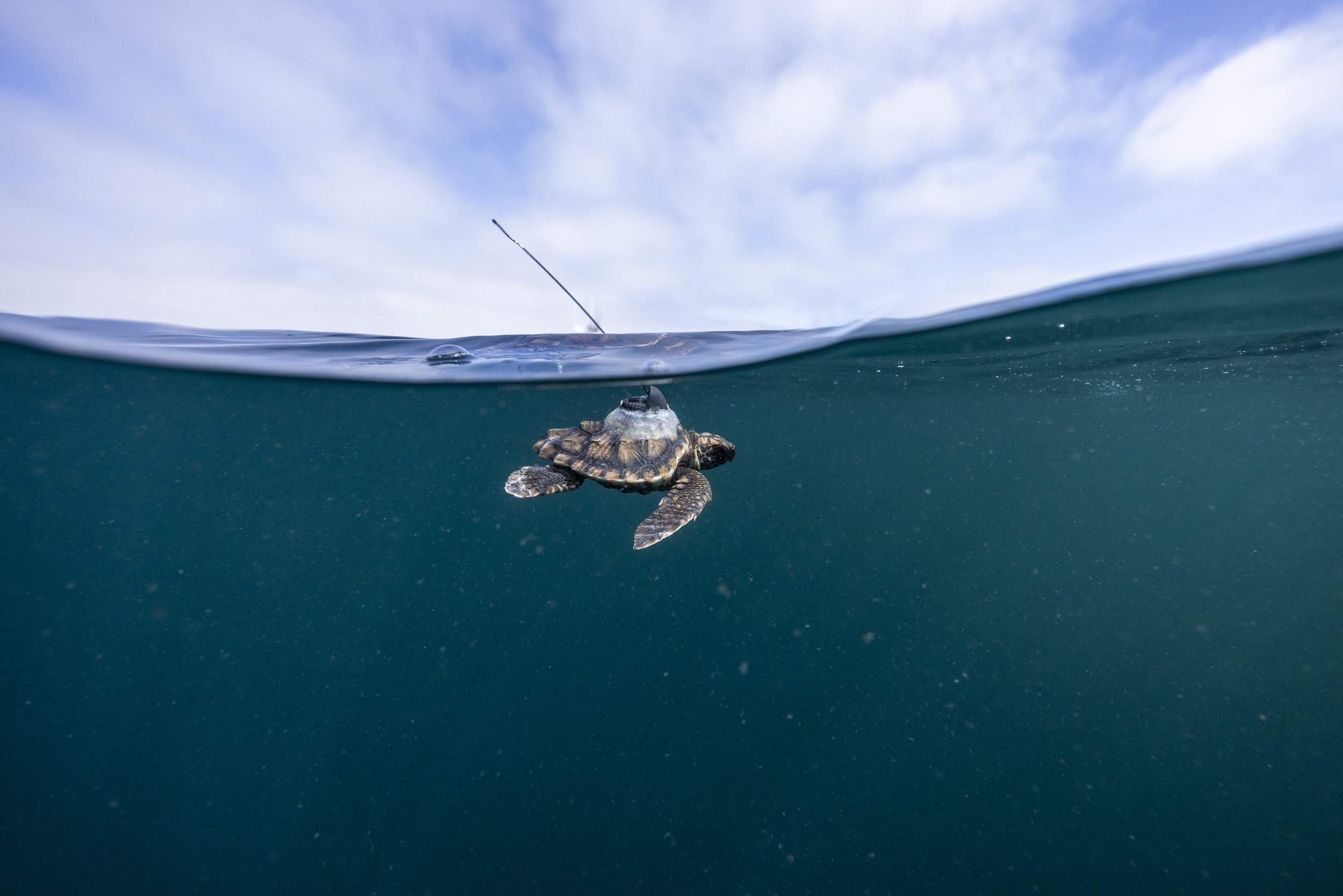Talitha Noble-Trull is the Conservation Manager at Two Oceans Aquarium Foundation. She heads their Turtle Conservation Centre which focuses on sea turtle rescue, rehabilitation, and release.
Two weeks into 2024, an exciting trans-Atlantic collaboration was embarked upon at the southern tip of the African continent.
In Cape Town, the southernmost city in South Africa, sits the Sea Turtle Conservation Centre (TCC). The TCC is a core part of the Two Oceans Aquarium (TOA) and its Foundation (TOAF), situated in the bustling harbour neighbourhood of the V&A Waterfront.
For almost 30 years, the TOA has been rehabilitating stranded turtles brought to it by members of the public. In the last decade, this work has taken on a life and intention of its own, growing rapidly to become known across southern Africa as a world-class turtle rehabilitation centre. While our coastline (Southern Ocean-facing with an icy average temperature of 53 Fahrenheit) is not known for sea turtles, five of the seven species regularly strand throughout the year at varying life phases. Specifically, and predictably, young post-hatchling loggerhead turtles strand along our coast every autumn and winter.
These tiny turtles have travelled south with the warm Agulhas Current from the South African/Mozambiquan border. Here, nesting grounds for loggerheads and leatherbacks have been protected and monitored for 60 years under the guidance of Dr George Hughes and the local government.
Upon reaching the southern coast of South Africa, these little loggerheads and, occasionally, leatherbacks are ejected into the cooler Benguela Current, where they go into cold shock. Additionally, they have often sustained injuries and ingested plastic. It does not take long for scores of little turtles to strand along the coast, swept ashore by onshore winds and winter storms.
The TCC works to rescue, rehabilitate, and release these little ocean reptiles. In a year, anywhere between 50 to 250 hatchlings could be rescued and, to date, the TCC has successfully released over 800 individuals.
One of the questions that sits at the tip of our tongues with every turtle (especially hatchlings) released is:
““Where do you go, little one? How do you spend your lost years, this decade we know so little about?” ”
Our team is acutely aware that, despite rehabilitation efforts, the ocean is dangerous for turtles. We need to learn more about them at sea, in their natural habitat, to protect them better. The best way to do this is through satellite tracking. However, tagging turtles as small as our post-hatchlings has several limitations. Primarily, satellite tags small enough to be suitable for these little turtles did not (and still do not) exist on the market for purchase.
There is incredible value in satellite tracking sea turtles as this provides insights into myriad contexts. The TCC has seen this first-hand with some of our released turtles.
For example, tracking data has shown us that juvenile and sub-adult green turtles are often attracted to two areas on the South African coastline: On the West Coast, nutrient-rich waters lead to seasonal jellyfish blooms and abundant fish stocks, but the water is exceptionally cold (about 50 Fahrenheit). The second area is De Hoop, a small Marine Protected Area (MPA) along South Africa’s southern coastline. Through tracking data and citizen science sightings, we have learned that groups of green turtles aggregate here every year!
This knowledge was gained through tagging, and the hope has always been that the TCC could do similar work with our post-hatchling juveniles in the not-too-distant future.
Early in 2023, Upwell Executive Director Dr. George Shillinger and I were introduced, and it quickly became apparent that we were asking similar questions. The difference was that George had the means to find answers and was already actively doing so.
George and the team at Upwell have a strategic relationship with Lotek tag manufacturers – together, they have been building and testing prototype tags to deploy on young turtles. This was being trialed in Portugal’s Azores and off Florida's coast and Upwell was keen to trial it in South Africa!
So, halfway through January 2024, we found ourselves tagging 14 post-hatchling loggerheads in Cape Town with Dr George Shillinger and his collaborator Professor Jeanette Wyneken, Director of the Florida Atlantic University Marine Lab.
What an experience it was to learn specialised tag attachment techniques from Professor Wyneken and to talk with George about all the tagging work that Upwell has been collaborating on. Over two days, we carefully tagged the 14 selected loggerheads and ensured that their tags were transmitting appropriately. Three days later, our little turtles were transported out to sea where the warm Agulhas Current flows about 30 miles southwest of Cape Town. There, the little pioneers were released into the Atlantic Ocean with much excitement for their futures.
In the weeks to come, we will hopefully get a glimmer into what these early days of dispersal and movement look like for post-hatchling loggerhead turtles off South Africa's coastline.
Reflecting on these last few weeks and the time spent with George and Jeanette, an overpowering thought rings true: Our turtles need us to collaborate on a global level. The vast, blue planet is their home – they travel across ocean basins and explore the coastlines of multiple continents. If we are to work at protecting turtles, we need to understand their movements and passageways across the earth. Yes, this means we need to track more turtles, but it also means we need to collaborate more.
As we build these relationships and share knowledge, understanding, and resources, the world becomes smaller, the task becomes easier, and the goal of seeing an ocean with safe pathways for turtles inches closer.
I am delighted we have taken a step in the right direction!






